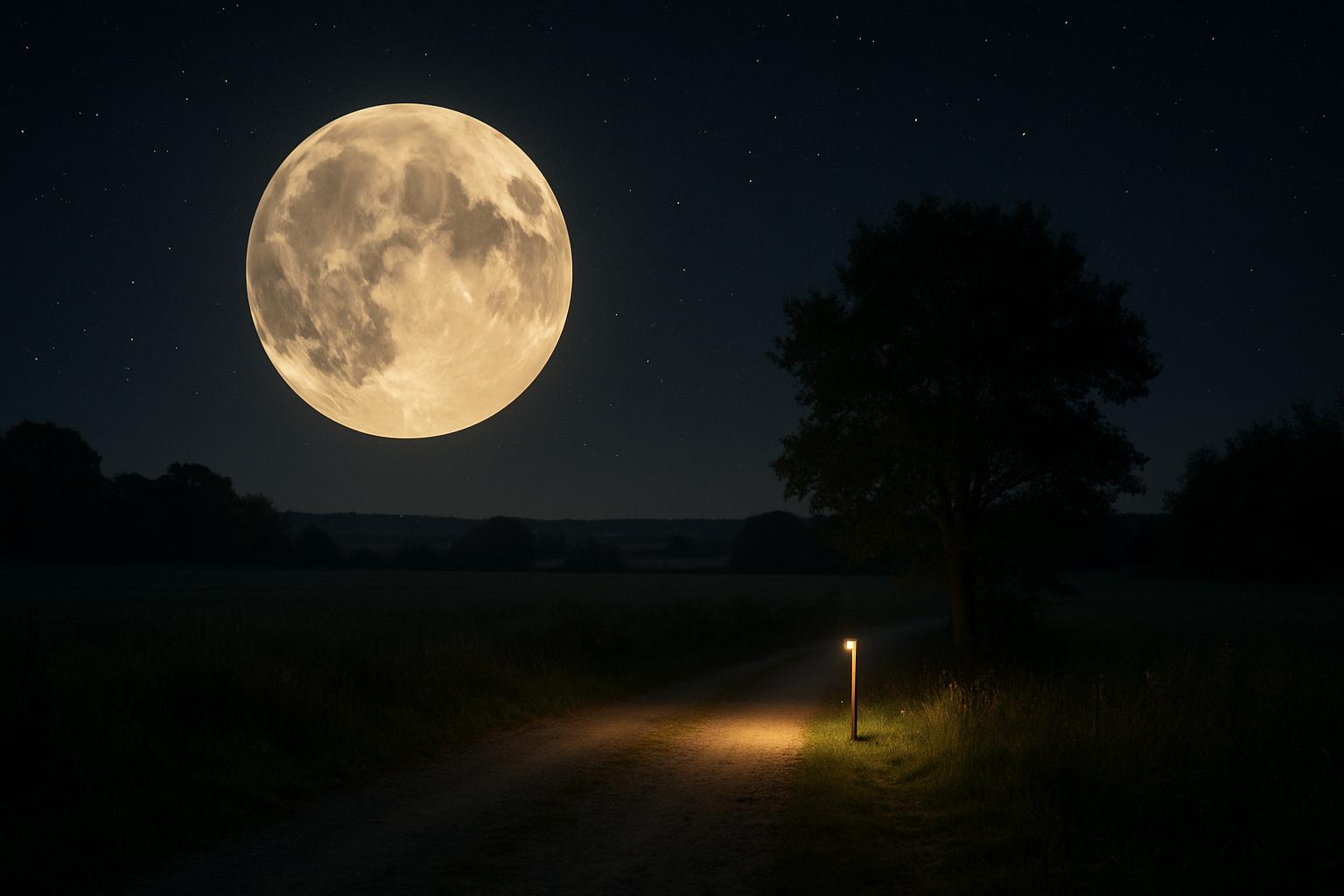Millions of people across the UK are preparing to witness a remarkable celestial event this October—the Harvest Moon, which is set to be the first of three supermoons visible before the year’s end. Unlike regular full moons, a Harvest Moon is traditionally defined as the full moon nearest to the September equinox, often signalling the time for farmers to gather crops before winter. This year, the event is particularly special because the Harvest Moon will also be a supermoon, meaning the moon will be at its closest point to Earth in its orbit, making it appear larger and brighter than usual.
The Harvest Moon is forecast to rise in the UK around 6:20 pm GMT on Tuesday, October 7. Visibility should be decent across much of southern England and Wales, where high pressure is expected to bring clearer skies. However, stargazers in northern parts of Great Britain may face some challenges due to rain and cloud cover, although eastern Scotland could enjoy some breaks in the cloud. Weather conditions are always a crucial factor in such observations, so checking local forecasts closer to the date is advisable. The moon will appear full for approximately three days, allowing several opportunities to appreciate the spectacle.
Following the Harvest Moon, the UK will experience two more supermoons this year. The second, known as the Hunter’s Moon, will peak around 4 pm on November 5, while the third, the Cold Moon, arrives in early December. The Hunter’s Moon, in particular, is noted for its brightness and size, often appearing about 14% bigger and 30% brighter than a regular full moon. This lunar event has deep-rooted historical significance, traditionally marking the time hunters prepared for the winter by tracking animals made more visible by the moonlight.
Astronomers have highlighted that the October full moon will be the largest and brightest supermoon of the year. According to Daniel Brown, associate professor in astronomy at Nottingham Trent University, the October full moon will be about 76 kilometres closer to Earth than the previous supermoon in September. This proximity enhances the moon’s brightness and apparent size, creating an awe-inspiring spectacle for skywatchers.
Historically, the Hunter’s Moon and the Harvest Moon have been key markers in agrarian societies. The bright moonlight provided farmers and hunters with extended visibility during crucial periods of preparation for the colder months. Today, beyond their cultural and agricultural significance, these lunar events continue to captivate the public and inspire a renewed appreciation for the natural rhythms of the cosmos.
For those unable to witness the October harvest moon due to local weather conditions, subsequent supermoons in November and December offer additional chances to catch these impressive astronomical phenomena. The upcoming Cold Moon in December will be the final supermoon of the year, closing out 2024’s series of extraordinary lunar displays.
📌 Reference Map:
- Paragraph 1 – [1], [6]
- Paragraph 2 – [1]
- Paragraph 3 – [1], [6]
- Paragraph 4 – [2], [4], [5]
- Paragraph 5 – [2], [4]
- Paragraph 6 – [6], [1]
- Paragraph 7 – [3], [6]
Source: Noah Wire Services
